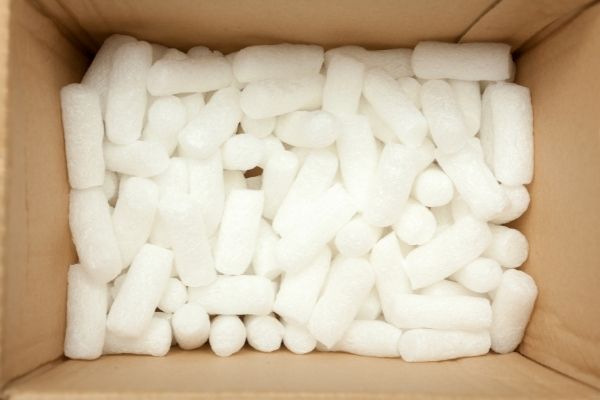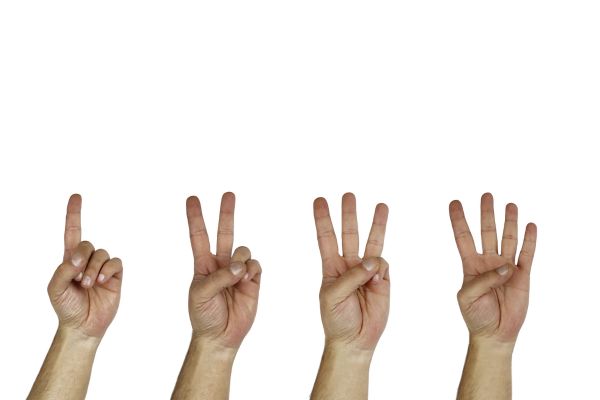I often buy a lot of items online which means I am left with a lot of packaging. I keep the boxes, bubble wrap and packing peanuts so I can reuse them later but they can pile up. So I wanted to figure out if I can recycle the packing peanuts.
The first thing I found was a lot of conflicting answers. Who’d have thought packing peanuts were so complex! Below we give you simple and clear answers to all your questions on packing peanuts.
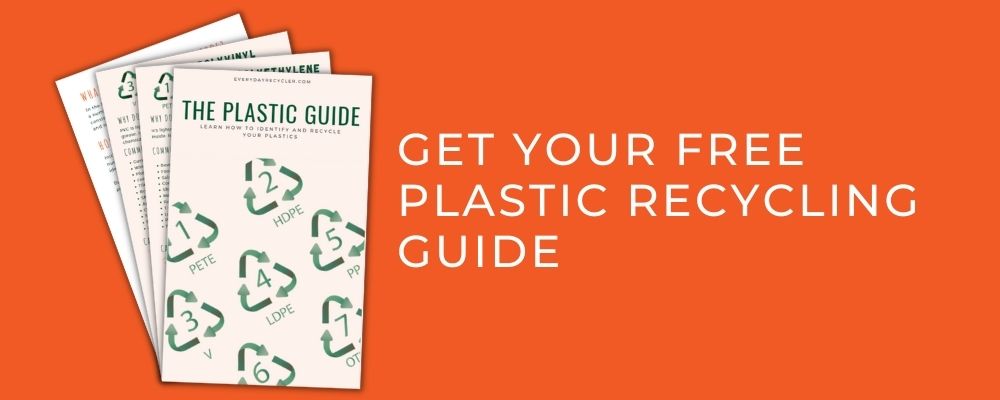
Quick Navigation
What Are Packing Peanuts Made From?
There are two main types of material used to make packaging peanuts, polystyrene plastic, and biodegradable materials like corn starch. Both of these are plastics made from polymers. If you would like to learn more, take a look at our article on what is plastic.
The difference is that corn starch plastic is made from natural polymers, while polystyrene is made from synthetic or human-made polymers.
Did you know: There is no difference between polystyrene and Styrofoam. “Styrofoam” is a trademarked brand of polystyrene made by The Dow Chemical Company.
The original packing peanuts were made from 100% polystyrene or plastic number 6 in the resin codes. Air is injected into the plastic, creating what is referred to as Expanded Polystyrene or EPS. You can learn more about EPS in our article on plastic number 6.
Nowadays, there are many biodegradable or natural types of packing peanuts available. They work the same as EPS packing peanuts; however, they biodegrade more easily because they are made from starches like corn starch.
Why Do We Use Packing Peanuts?
Packing peanuts have been around for about 55 years. There are many reasons why companies use them to ship their goods. They include:
- Packing peanuts are very lightweight.
- They are tough and reusable.
- Provide excellent protection for delicate items.
- They can fill spaces efficiently.
- Reduce energy costs for packaging and transportation
- And they are cheap to produce.
These properties, combined with the cost savings, make them an easy choice for many businesses. Luckily, these days we are becoming more aware of the impacts this material can have on the environment, and alternatives are being developed.
What’s So Bad About Packing Peanuts?
The same qualities that make EPS packing peanuts great for packaging make them terrible for the environment. Being strong and durable is good for packaging, but it also means they take a very long time to break down.
Being extremely lightweight also means they are blown around out of bins and into the environment too easily. Once released, wind or water easily carry the lightweight polystyrene. It also breaks down into small pieces easily, making its way into every nook and cranny. Animals can mistake the small pieces for food and ingest them, leading to devastating outcomes.
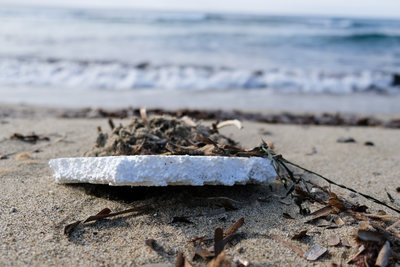
FACT: Styrofoam and Styrofoam products fill up 30 percent of our landfill space, and landfills quickly become full.
Can You Recycle Packing Peanuts?
Packing peanuts are much better to avoid if you can. Unfortunately, it is not always up to us. We buy products from companies who decide to use this type of packaging. Then, we are the ones left wondering what to do with it.
Styrofoam or polystyrene is tough to recycle. There is a lot of information on recycling polystyrene, but accessibility to programs is limited in many places. Most municipal recycling programs do not accept polystyrene.
Plus, many polystyrene recycling programs have strict conditions, more often listing packing peanuts as excluded items.
Why is it so hard? Firstly, to successfully recycle them, you must separate the plastic peanuts from the biodegradable peanuts. Otherwise, they will contaminate the recycling.
Secondly, polystyrene recycling is not an easy process. There is very little profit in recycling polystyrene, which is bulky and expensive to transport.
Hope is not entirely lost! A few programs in the United States accept packing peanuts for reuse. We provide the links for you below.
Perhaps the best solution is to stop using polystyrene altogether. Many countries and cities have already banned the use of polystyrene, including:
- United States – more than 100 cities in the United States have banned plastic foams, including New York City, Washington DC, and California.
- Eight of the Caribbean countries banned the use of polystyrene in 2019.
- Zimbabwe banned Expanded polystyrene (EPS) back in 2017.
If you find yourself in this situation, reusing is your best option, followed by recycling if you have access to a facility.
The best solution is to contact the company and ask them to find a more sustainable solution. Here’s a draft email you can send to your favorite company to encourage them to switch.
Hi,
We really love your products but we would love them even more if you used recyclable or biodegradable packaging. Then we wouldn’t be so embarrassed to tell our friends about you. Let’s be more sustainable together.
From your favorite customer!
How to Dispose of Packing Peanuts
As mentioned above, many people will not have access to a program to recycle packing peanuts. So here are the steps we recommend.
Step 1: How to Identify Your Packing Peanuts
First, you will need to identify which type of packing peanuts you have.
The colors of packing peanuts are not a perfect means of identification. In general, the white and pink packing peanuts are made mostly from virgin polystyrene, and the green is made using at least 70% recycled polystyrene. The pink ones have been treated with an antistatic coating, so they don’t stick to everything.
Biodegradable shipping peanuts are said to be brown or beige. However, in some cases, I have seen biodegradable peanuts sold in multicolor bags, so it’s not the best test.
A better way to tell which type of packing peanuts you have is to test if they dissolve in water. The plant-based or biodegradable packing peanuts will dissolve in water, whereas those made from polystyrene will not. Leave the peanut for a few hours; if it hasn’t dissolved completely, then it’s Styrofoam.
Step 2: Look for Options For Resuse of Your Packing Peanuts
Regardless of the type, the best course of action is always to reuse.
- Save your packaging materials and use them again. This is especially good if you often sell second-hand items online.
- A great source for donations if you are in the UK or Australia is Packshare (Packshare Australia). They have a large searchable database that allows businesses to donate or receive unwanted packaging materials. You can also check with your local mail or delivery services to see if they will take them.
- If you live in the United States, there are a few options for recycling packing peanuts:
- Pak Mail provides consumers with a place to take packing peanuts for reuse, and they have more than 500 locations across the U.S., Canada, Mexico, and Japan.
- Home for Foam also has a map locator available.
- Maybe even approach local small businesses if you get a regular amount coming in. They may not have thought of it, and it will save them money.
- Check with local schools or craft centers to see if they can use the packing peanuts.
- You can always check Pinterest for some great craft ideas for you and the kids.
Step 3. How to get your peanuts ready to donate.
- Separate the packing peanuts from any other packing material like cardboard, tape, or shredded paper.
- Place them in a bag.
- Check what is accepted by your local drop off-center, as some will only accept white polystyrene.
If you’re unable to find a reuse option for your packing peanuts, then check the following instructions for recycling or disposing of them.
What To Do With Biodegradable Packing Peanuts?
If you have the biodegradable type and have exhausted reuse options you can either dissolve them in the sink or put them in your compost bin.
What To Do With Polystyrene Packing Peanuts
Check with your local authority for information to see if you can access any recycling programs. Otherwise, these polystyrene packing peanuts must be disposed of in your general trash.
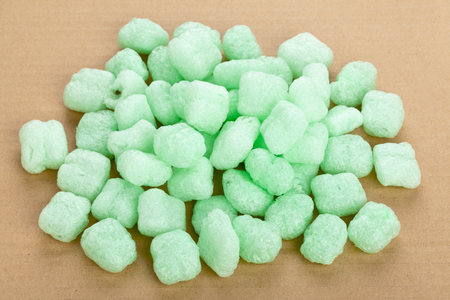
Alternatives to Polystyrene Packing Peanuts
If you can avoid the need for packing material altogether, this is the best option. You can do this by having the right sized box for the item you are sending. If this is not possible or the item needs more protection, try one of these alternatives.
Biodegradable packing peanuts are made from natural polymers from corn starch, wheat, or other starches. These peanuts dissolve in water and can be composted. They weigh a little more than the polystyrene ones, so that shipping can cost more. Plus, they are more expensive to make—a small price to pay for the environment.
Recycled paper or cardboard products – these are good because they often already have recycled content in them. Plus, they can usually be recycled again. Just be cautious of switching to shredded paper. Although preferable to plastic peanuts, shredded paper cannot go in your curbside bin and must either be composted or go in general waste. I have seen shredded cardboard packing that is possibly better because it stays together and can be recycled.
Mushroom packaging – this is a pretty cool solution. The mushrooms are grown into molds over five to ten days. They are completely compostable and will also biodegrade.
Plastic Bubble Wrap – There are many different types of plastic bubble wrap. Some are even biodegradable these days. You can recycle the non-biodegradable type with your soft plastics.
Unbuttered popcorn – what a lovely idea, getting a package that smells like a box of popcorn. Maybe leave off the salt too!
Sphagnum Peat Moss – the peat moss is dried and used in the packaging to protect the item. Another great idea and very eco-friendly.
HOW TO RECYCLE
PACKING PEANUTS
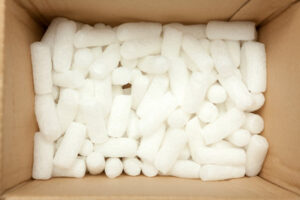
Can you recycle it?
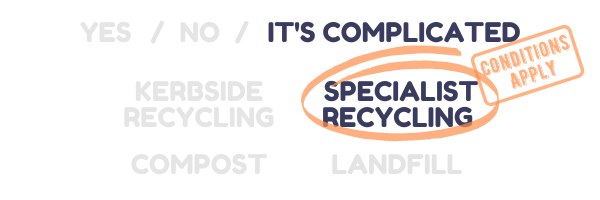
Always check with your local Authority .
Instructions
- Avoid
- Reuse or Donate
- Check before you dispose of it.
- If biodegradable, dissolve or compost them.
- If polystyrene then
- Check for a recycling program.
- Try arts and crafts options.
- Place in your general waste bin.
- Ask the company who sent them to switch to a better option.
Buy Recycled
We do not encourage the use of polystyrene packing peanuts even if they are recycled.
The Wrap-up
We are all buying a lot more online these days, but what do we do with all that packaging. Unfortunately, the choice of packaging is not always in our hands. If you find yourself with a heap of polystyrene packing peanuts and you want to know how to recycle or dispose of them, follow the steps above.
Reducing the use of polystyrene, or plastic number 6, packing peanuts is the best solution. So if you have time, why not write to the company who sent them to you. Sometimes people need a little reminder that there are better ways. We have provided some draft words for you above.
While you are at it, why not contact your local government authority and see what they are doing to ban polystyrene for good.
- Home for Foam
- Stanley Packaging – Packing Peanuts Knowledge Base
- Max Roman Dilthey, 2018, University of Illinois: The Pros and Cons of Styrofoam
- Imogen Calderwood, 2018, 16 Times Countries and Cities Have Banned Single-Use Plastics, globalcitizen.org
- rpadmin, 2018, 5 Styrofoam Peanut Packing Alternatives To Save The Planet, ribble-pack.co.uk


